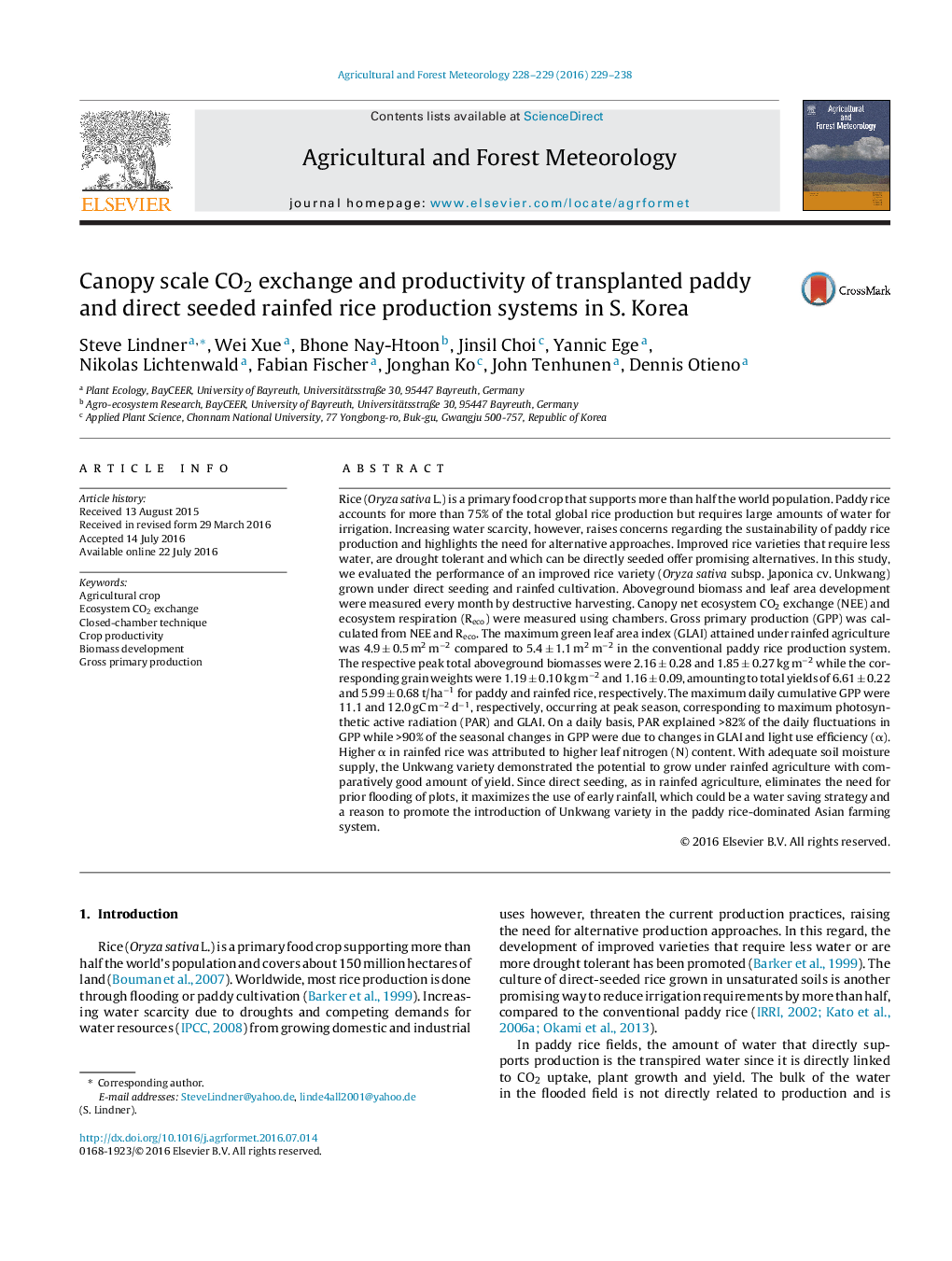| کد مقاله | کد نشریه | سال انتشار | مقاله انگلیسی | نسخه تمام متن |
|---|---|---|---|---|
| 6458217 | 158307 | 2016 | 10 صفحه PDF | دانلود رایگان |

- Higher GPP, (β+γ)1500, aboveground biomass, specific leaf weight, leaf N content and quantum yield in rainfed rice.
- PAR determined the daily fluctuations in GPP while seasonal trends were due to GLAI and α.
- Shifts in C allocation improved water uptake and avoided water stress with a slight compromise in yield for rainfed rice.
- Rice hybrid Unkwang maintains productivity under rainfed agriculture in the absence of drought.
Rice (Oryza sativa L.) is a primary food crop that supports more than half the world population. Paddy rice accounts for more than 75% of the total global rice production but requires large amounts of water for irrigation. Increasing water scarcity, however, raises concerns regarding the sustainability of paddy rice production and highlights the need for alternative approaches. Improved rice varieties that require less water, are drought tolerant and which can be directly seeded offer promising alternatives. In this study, we evaluated the performance of an improved rice variety (Oryza sativa subsp. Japonica cv. Unkwang) grown under direct seeding and rainfed cultivation. Aboveground biomass and leaf area development were measured every month by destructive harvesting. Canopy net ecosystem CO2 exchange (NEE) and ecosystem respiration (Reco) were measured using chambers. Gross primary production (GPP) was calculated from NEE and Reco. The maximum green leaf area index (GLAI) attained under rainfed agriculture was 4.9 ± 0.5 m2 mâ2 compared to 5.4 ± 1.1 m2 mâ2 in the conventional paddy rice production system. The respective peak total aboveground biomasses were 2.16 ± 0.28 and 1.85 ± 0.27 kg mâ2 while the corresponding grain weights were 1.19 ± 0.10 kg mâ2 and 1.16 ± 0.09, amounting to total yields of 6.61 ± 0.22 and 5.99 ± 0.68 t/haâ1 for paddy and rainfed rice, respectively. The maximum daily cumulative GPP were 11.1 and 12.0 gC mâ2 dâ1, respectively, occurring at peak season, corresponding to maximum photosynthetic active radiation (PAR) and GLAI. On a daily basis, PAR explained >82% of the daily fluctuations in GPP while >90% of the seasonal changes in GPP were due to changes in GLAI and light use efficiency (α). Higher α in rainfed rice was attributed to higher leaf nitrogen (N) content. With adequate soil moisture supply, the Unkwang variety demonstrated the potential to grow under rainfed agriculture with comparatively good amount of yield. Since direct seeding, as in rainfed agriculture, eliminates the need for prior flooding of plots, it maximizes the use of early rainfall, which could be a water saving strategy and a reason to promote the introduction of Unkwang variety in the paddy rice-dominated Asian farming system.
Journal: Agricultural and Forest Meteorology - Volumes 228â229, 15 November 2016, Pages 229-238